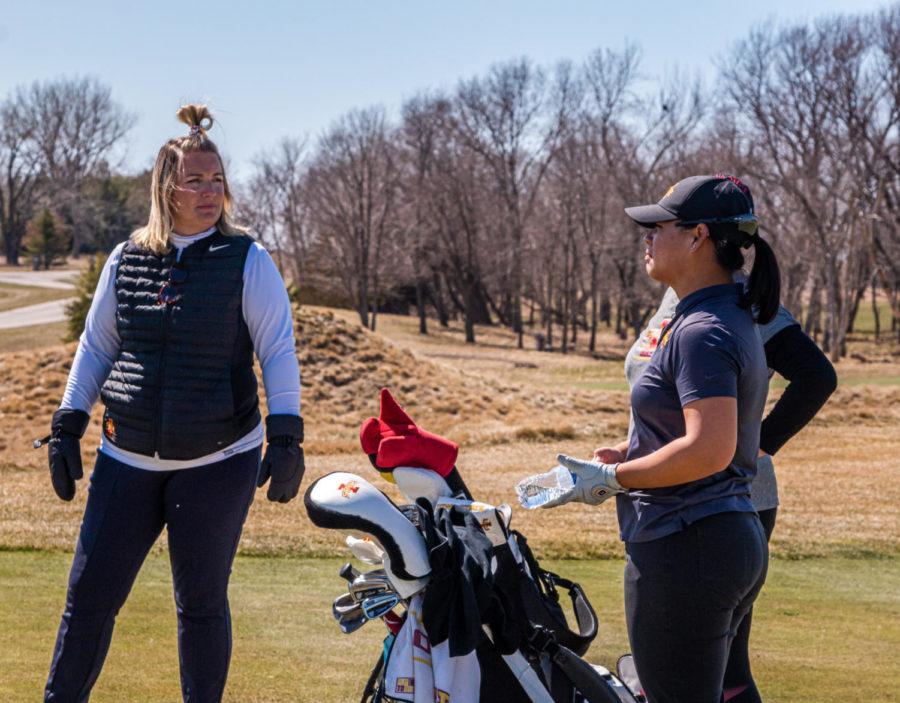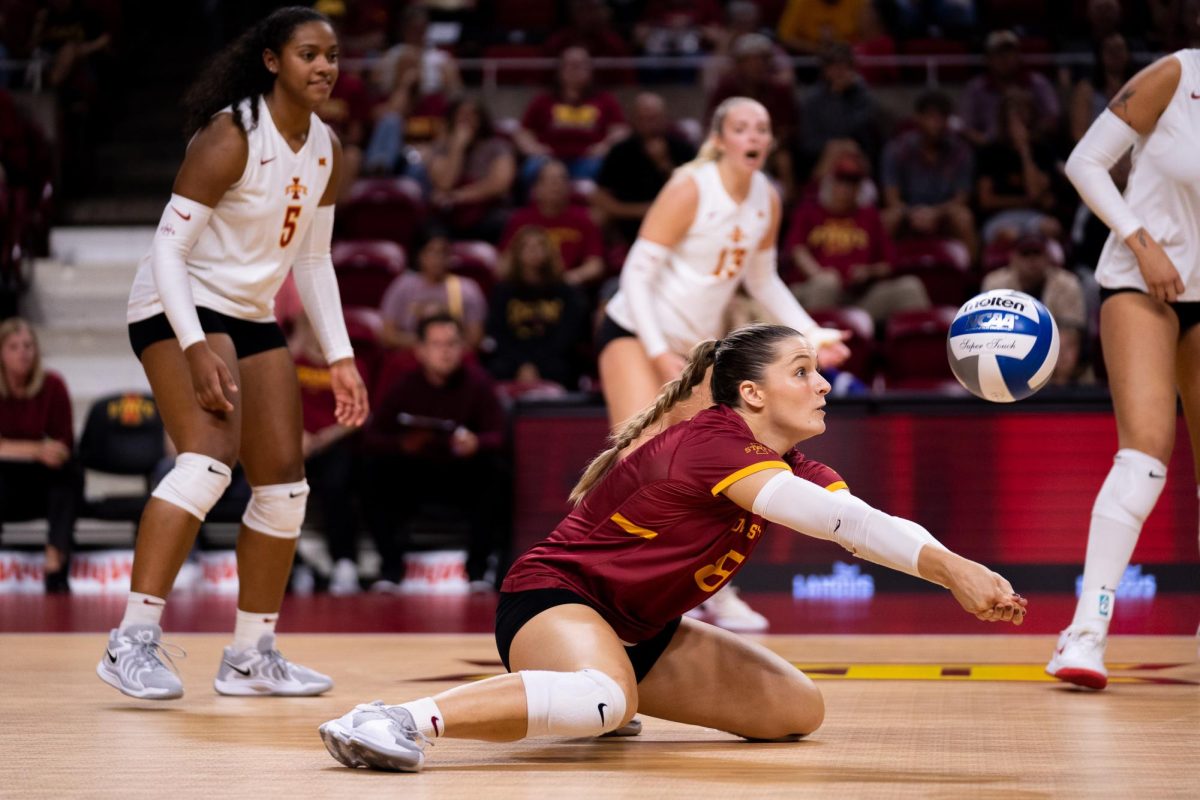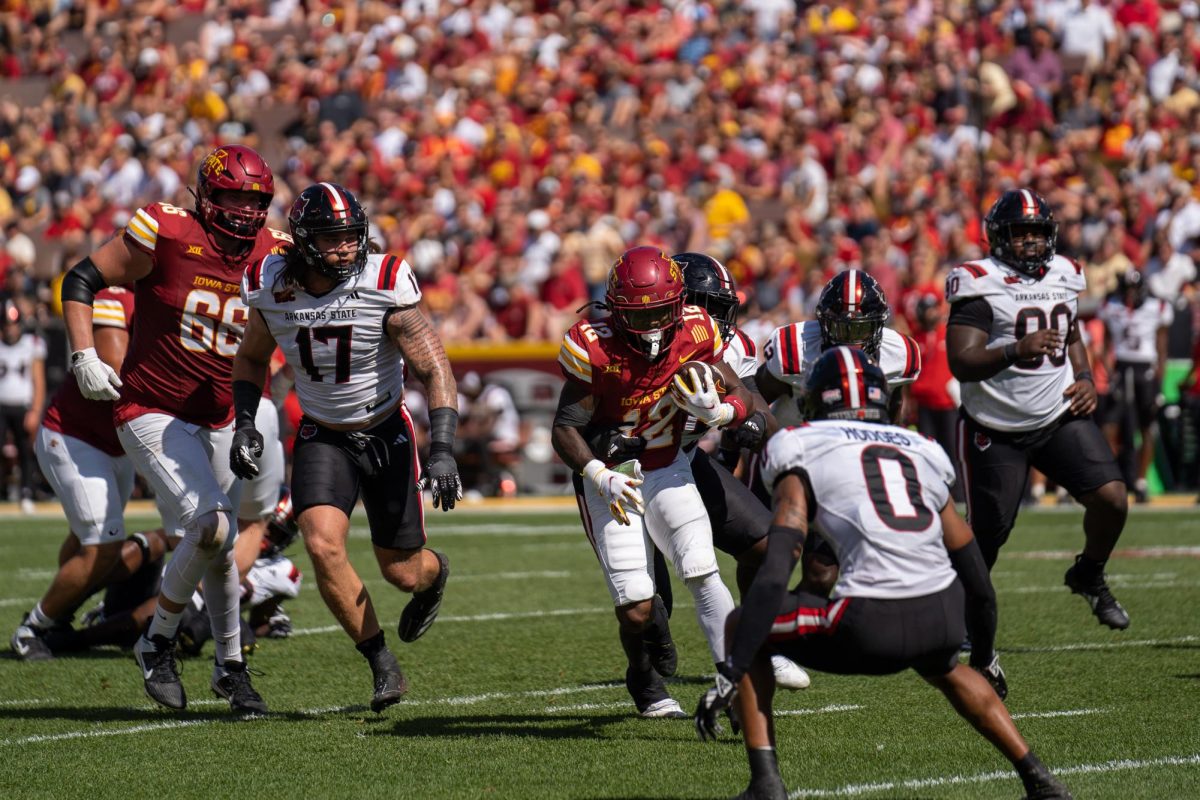Blood drive ready to open veins
November 2, 1998
Members of the Blood Center of Central Iowa, a nonprofit organization, and Iowa State’s Blood Drive committee look to boost blood donors to 2,200 with the start of this week’s Fall Blood Drive.
Donations will be taken at the Great Hall in Memorial Union from 10 a.m. to 5 p.m. Monday through Thursday, and from 8 a.m. until 3:30 p.m. on Friday.
“We are very anxious to reach the Blood Center’s goal this year. We have around 24,000 to 25,000 students at Iowa State University, and our goal is only 2,200,” said Marsha Pinger, co-chairwoman for the blood drive and junior in elementary education. “There has got to be that many eligible donors out there.”
About 1,700 students donated blood during last year’s drive, according to a press release,
“It takes anywhere from 15 to 20 minutes to donate, but each donor is different,” Pinger said, adding that interested donors are encouraged to allow an hour for the donation.
Representatives from blood banks in Ottumwa, Des Moines, Cedar Rapids, Waterloo, Ames and Omaha, Neb., will be on hand to collect donations, which will be equally distributed to 27 hospitals in 20 central Iowa counties.
“Each donation has the potential to benefit three people,” Pinger said. “One out of every 10 people that enters a hospital needs blood, and with a donation of less than a pint, three people’s lives can be saved.”
Pinger said each donation is divided into three bags consisting of Red Blood Cells (RBCs), platelets, plasma and cryotrecipitate. Each division benefits a different patient.
RBCs can go to a person with anemia, platelets to an internal bleeding victim, plasma benefits burn victims, and cryotrecipitate goes to people suffering from hemophilia.
“With the fact that each donation can benefit three people, I am unsure of why people are not more willing to donate,” Pinger said. “It may seem like 2,200 donors yield a lot of blood, but blood doesn’t have a very long life.
“Every person counts … because we need to be constantly replenishing blood,” she said. “We can always have more.”
Common fears such as needles and diseases deter students from donating, Pinger said.
“People seem to be afraid to donate for a lot of reasons. Things like needles really scare students, but it’s no big deal,” Pinger said. “The effects vary from person to person, but it’s over quickly, like a shot.”
After the initial “sting” of the donation, Pinger said donors tend to relax and feel positive about their donation.
“We have so many students to pull from, and we have done [the blood drive] for so long that we put it on every year,” Pinger said. “This year, however, we have tried to expand to reach off-campus students and people from the community.”
The Blood Drive committee has invited guests to the blood drive to encourage donors and boost participation.
With the appearances of Mayor Ted Tedesco on Monday at 11a.m., President Martin Jischke on Wednesday at 11:15 a.m. and ISU Football Coach Dan McCarney on Thursday at 11:30 a.m., the committee hopes to attract members of the community that the university has been unable to reach.
Students may still volunteer during the week by showing up to the Great Hall whenever they can spare time.
“Students can show up any time that they want to volunteer,” said Brooke Doering, publicity chairwoman for the blood drive and sophomore in journalism and mass communication. “Just show up because we can always find something for you to do.”
One student has chosen to volunteer because she can no longer donate blood because of medical reasons.
“I was very active with our high school blood drive and chose to continue in this life-saving project by promoting the drive,” said Kate Nelson, freshman in horticulture. “I really encourage students to take the time to donate because blood is something they can never have enough of.”






